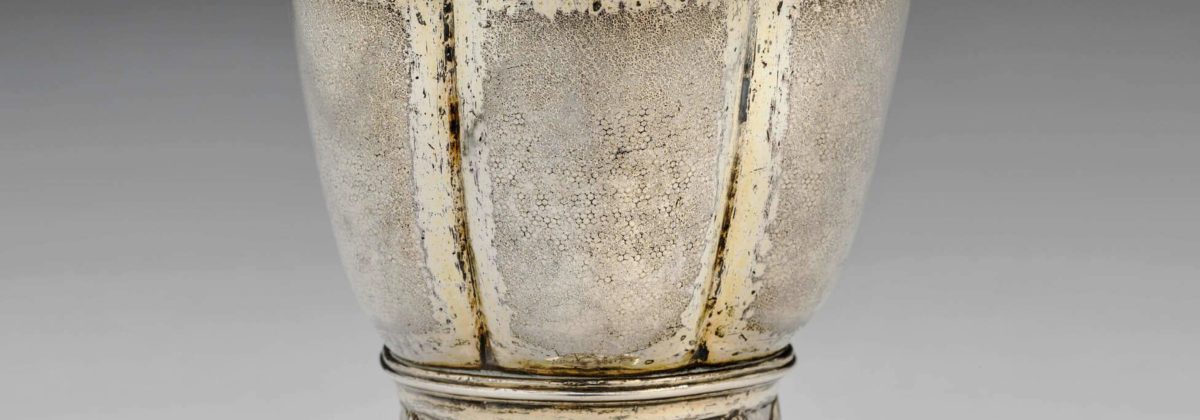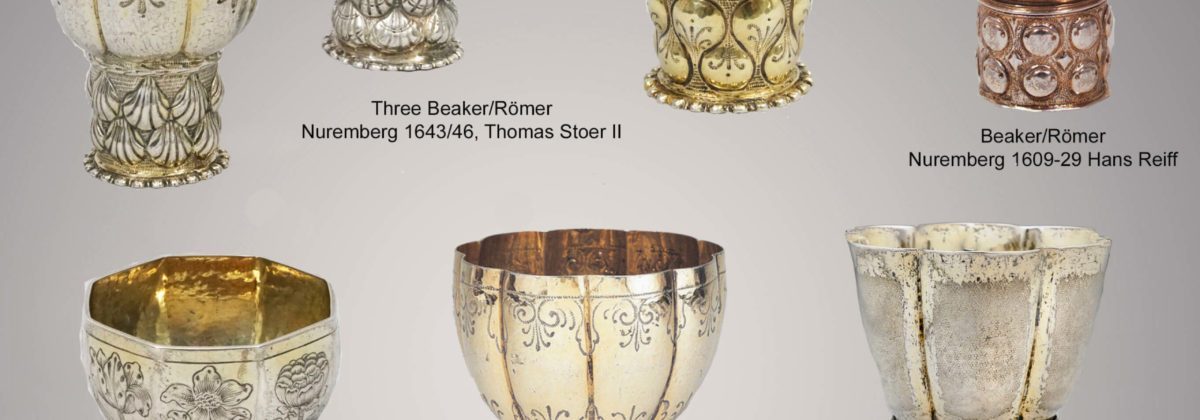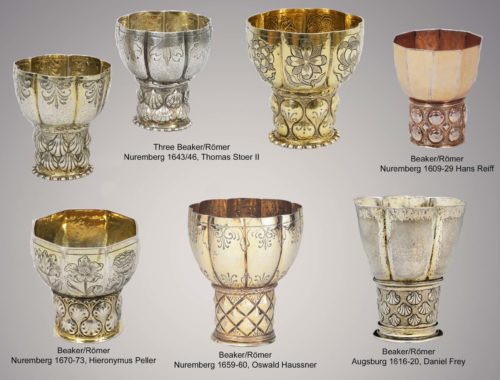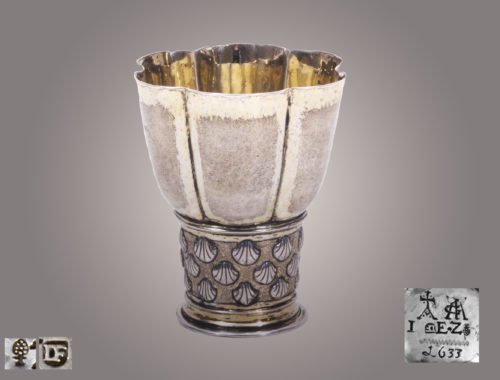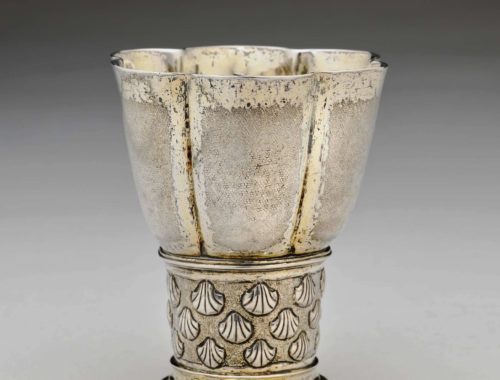Object-No # 237
Augsburg, 1616/20
Daniel Frey (ca. 1588-1632)
City’s hallmark: a “pyr” for Augsburg, period 1616-1620 (Seling 2007, no 0250)
Maker’s mark: monogram „DF“ in a shield for Daniel Frey (ca. 1588-1632) (s. Seling 2007, no 1304)
Engravings: the monogram „I/E-Z“; two house marks and the date „1633“
Dimensions: height: 9 cm (3, 54 in.); weight: 108 gr.
Detailed Informations
Silver Partly-Gilt Wine Goblet (Roemer)
The present is a silver partly-gilt wine goblet and presents the so-called “Roemer” type.
The cylindrical shaft is raised on a round, narrow and slightly profiled foot. The space between the lower and the upper part of the shaft is gilt and adorned with prunts in the form of shells, pawned in three rows. The field with the applied shells is moreover punched. The six-lobed bowl is standing above the shaft and is spreading towards the upper part like a flower. The walls of the bowl are decorated in six fields with snake-skin punches. The straight parts around the snake-skin are gilt. The goblet is gilt on the inside as well. The gilding is held in a very good condition and has usual traces of usage.
The house marks, which denote property, and other engravings on the bottom of the goblet as well as the lobed bowl and the wonderful applied shells, are features of an exceptional Roemer from Augsburg.
On the Roemer
“Roemer” are goblets or beakers, which copy a certain form of glass. Roemer made of glass are documented in writings since the mid-15th century. At the beginning of the 17th century, the Roemer takes a form, which is considered as typical to it: trailed thread round and conical foot, cylindrical middle-part with applied prunts, big round bowl. It seems that Roemer were mainly in use in Middle and North Europe. Roemer was a form of glass, which was very often used during the 17th century. One can see many of them in Dutch seventeenth-century still-life paintings. Great numbers relative to the production of Roemer are known for the beginning of the 17th century. They were produced and destined also to the export. The great variety of Roemer made of silver indicates further more the popularity of this wine beaker.
The document Catalogue Colinet from the glasshouse in Beauwelz (Wallonia) from the 16th century (ca. 1555) mentions and describes different forms or Roemer. Among them one can find a goblet with a tapering bowl and a cylindrical middle-part with applied shells (cat. no 24). Shells were part of the decoration of Roemer according to the title and the labels of the Catalogue Colinet (cf. fig. Ia-d, Theuerkauff-Liederwald 1968/I: 122-3).
Although there are many known forms of Roemer, the form of the present goblet with the six-lobed bowl is rarely met. This flower-like bowl seems to be a type from South Germany. The here-described goblet presents moreover a transition type of the beginning of the 17th century, when the middle-part was not yet very high.
Maker
Daniel Frey was a protestant goldsmith, born around 1588. He became a master maker in 1616 and got married for the first time on the same year. In 1618, it followed a second marriage to Euphrosyna Grill, daughter of the goldsmith Balthasar I Grill. Daniel Frey died in 1632.
Literature
Chambon, R., L’histoire de la verrerie en Belgique du IIe siècle à nos jours, Bruxelles: Ed. de la Librairie Encyclopédique, 1955
Theuerkauff-Liederwald, A.-El., ‚Der Römer: Studien zu einer Glasform, I – II’, In: Journal of Glass Studies, Bd. X, 1968, S. 114-155 & Bd. XI, 1969, S. 43-69
Seling, H., Die Augsburger Gold- und Silberschmiede 1529-1868, Bd. I-III, München: Beck Verlag, 1980 -2007


